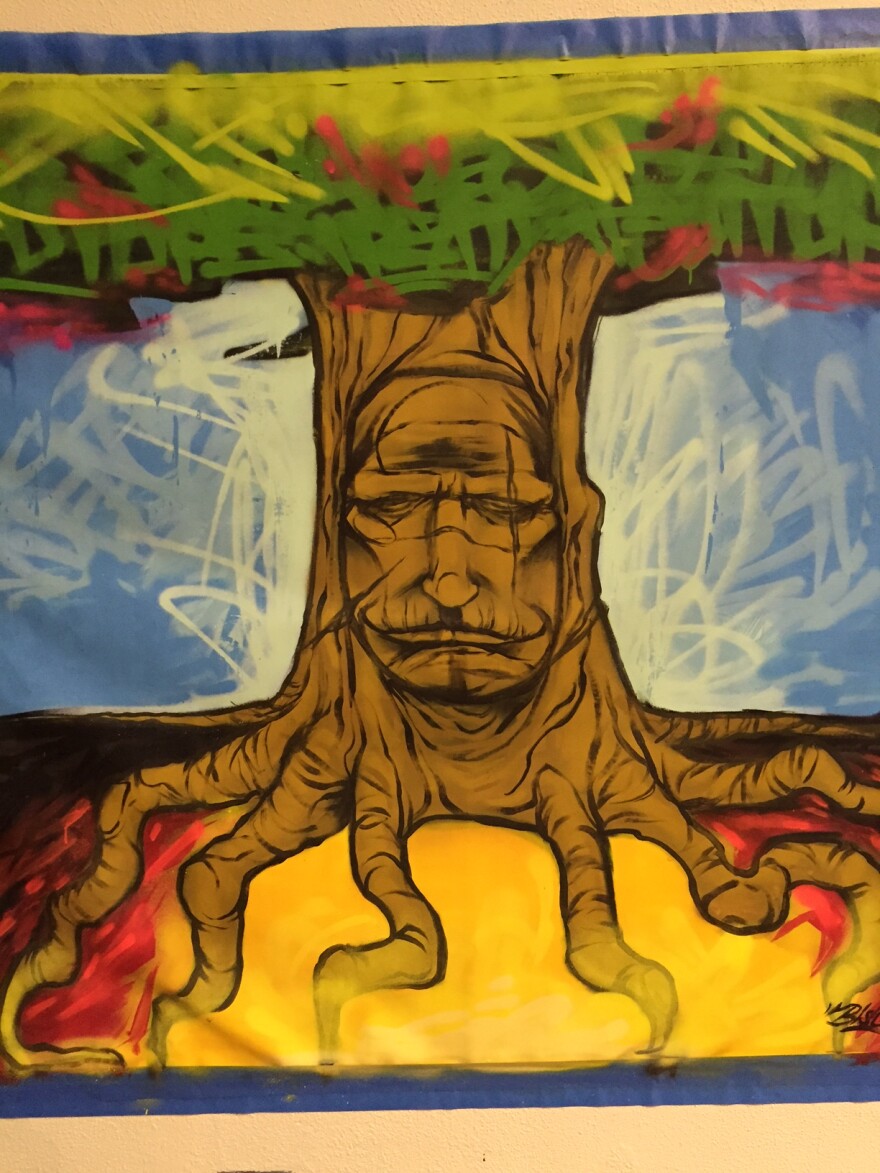Last week the First Alaskans Institute held a summit on racial equity. Speakers focused on topics like internalized oppression, unconscious bias, and finding healthy ways to talk about race. Off to the side of the stage, Arielo "Bisco" Taylor shook cans of spray paint and turned the ideas into art.
Bisco's first professional art gig was in the 5th grade in Anchorage, when he matured from sketching cartoons to drawing portraits.
"People would ask me if I could draw so-and-so for them, somebody from their favorite boy band or whatever it would be. And usually I would turn them down," he paused, laughing. "And then people started giving me money."
When he was 14, he pushed aside pictures of *NSYNC and turned to graffiti art. He says it took over his world.
"I didn't go a day without either sketching something or doing graffiti somewhere. Or thinking about stocking up on paint or where I'd like to paint. Even as I would walk around or ride the bus to school or something like that, my eyes would just scan around, looking for where something would look good."
Ten years later, he doesn't have much time for painting graffiti. He's too busy working two jobs and helping care for his toddler. But last week he stepped away from graphic design and tattooing to sit in on the Racial Equity Summit. As speakers told of hating their own skin and being torn from their cultures at boarding schools, he painted streaks of red and black on a canvas. In the foreground, he drew faces of native peoples with cultural symbols surrounded by bright yellow. But as the red and black forces of assimilation took hold...
"The faces are even more obscured," he said. "So you can see they're losing a sense of self the more and more the culture is stripped away from them. That was just gathered from the speeches over the first day."
Bisco identifies as black and Aleut, though he says he doesn't know much about his own Aleut history. But he says he understands internalized racism.
"There were a lot of times, mainly in elementary school, middle school, early on in high school where a lot of kids would say really bigoted things about Alaska Natives. And me being black-passing,would not realize that I was half Aleut."
He says it used to make him feel ashamed until he started working with First Alaskans Institute. He began talking about issues of race and learning about his identity, some of the solutions that surfaced during the second day of the summit. Those suggestions worked their way into his next painting -- a scarred tree whose roots grow from the images of the first painting and result in leaves drawn using words of hope.
"Through the adversary we still keep our strong roots, and the top of the tree which would represent the future. I wrote a lot of the key words in there," he explained. "They're really obscured, but I find that having them not so legible really adds to it. You have to strain your eyes to really look in there."
Bisco says the art contains symbolism that asks people to think about the challenging topic of race even if they aren't ready for an outright conversation.
His paintings will be displayed at the First Alaskans Institute.


